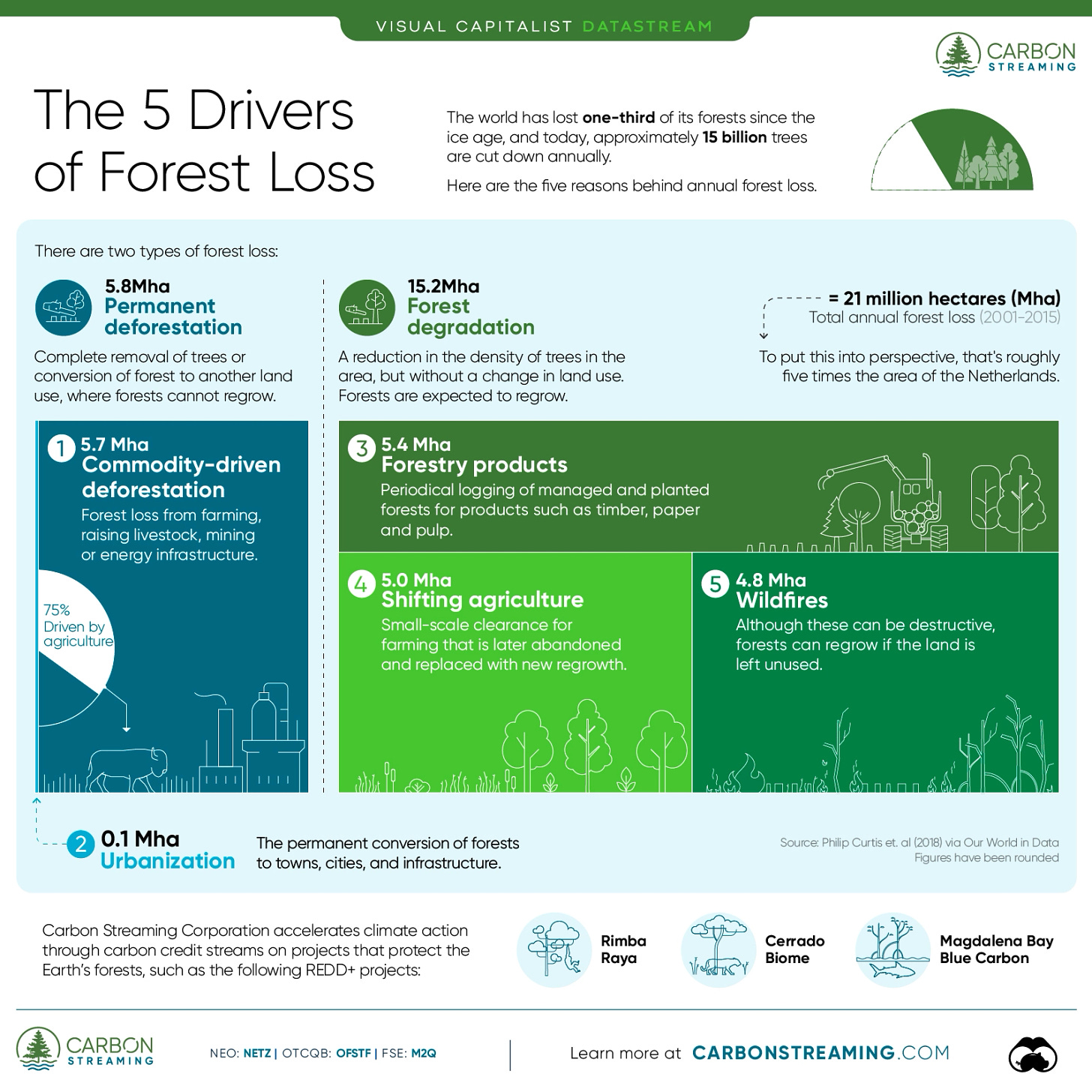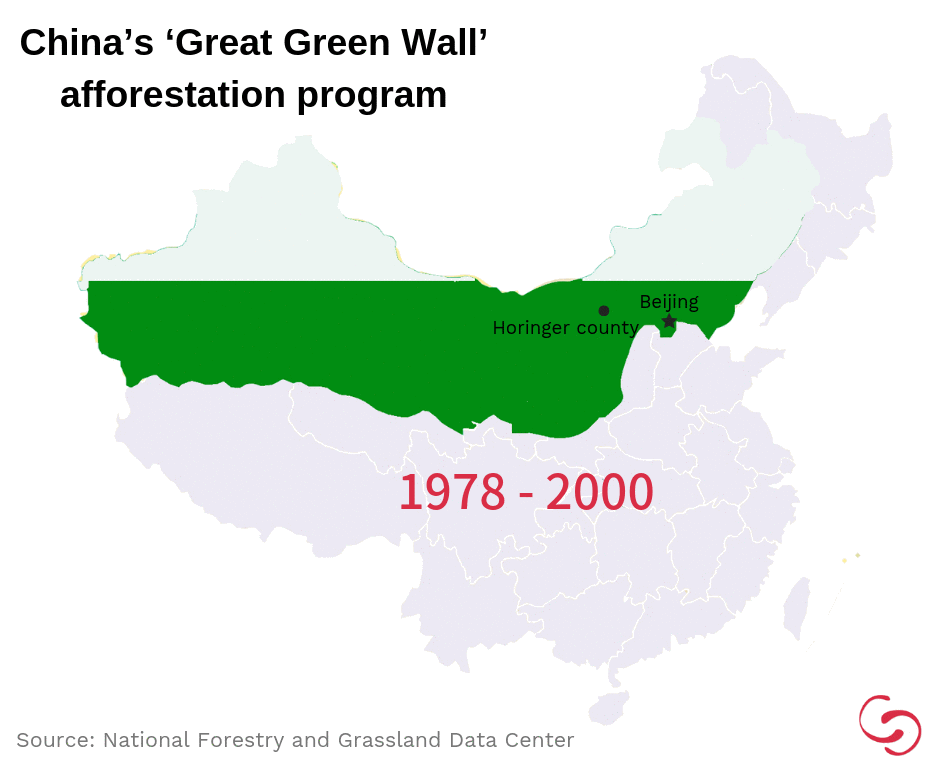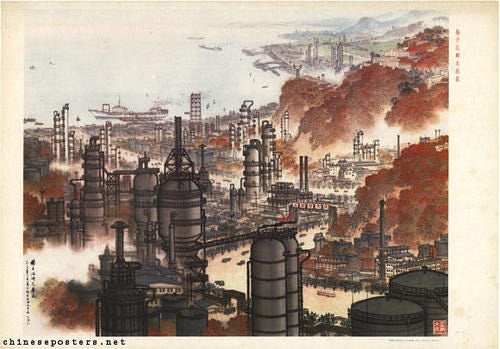Take a Deep Breath
COP27 has ended with almost no gains. Environmental degradation is worsening and the Global North is in recession. Asia, however, is emerging as the leading climate, economic and social enabler.
UPDATE: Your intrepid editor is still suffering from a major lung infection and confined to his apartment for another few days.
To help make breathing easier seems like a logical topic for todays Long Mekong Daily. First up is an assessment of forest loss, followed by an overview of China’s advances in afforestation. COP27 was a dismal failure mainly due to the Global North’s preferrence for geo-political power machinations rather than building a shared future for mankind. Lastly, Worldmaking from a Global Perspective: A Dialogue with China, is a series of research projects and online and in-person events that is designed to foster knowledge about the factors contributing to climate, technical and demographic development, and cultural products such as music, literature, art, and film, among others. The analyses focus on mechanisms of interplay between world-making and world-narration, with an emphasis on China in exchange and comparison with other world regions.
Forest Loss Accelerates
The world has lost one-third of its forests since the ice age, and today, approximately 15 billion trees are cut down annually. Forests are wellsprings of biodiversity and an essential buffer against climate change, absorbing billions of tonnes of carbon dioxide emissions every year. Yet, forest loss continues to grow.
‘Forest loss’ is a broad term that captures the impacts of both permanentdeforestation and forest degradation. There is an important distinction between the two:
Permanent deforestation: Refers to the complete removal of trees or conversion of forests to another land use (like buildings), where forests cannot regrow.
Forest degradation: Refers to a reduction in the density of trees in the area without a change in land use. Forests are expected to regrow.
Forest degradation accounts for over 70% or 15 million hectares of annual forest loss. The other 30% of lost forests are permanently deforested.
Read the full article here.
China is Reversing Forest Loss
China ranks first globally in the land area of planted forests and forest coverage growth, contributing one-fourth of the world's new forest area in the past decade. The secret behind the rapid growth of China's green landscape lies in its large-scale greening campaign, including conserving existing ecosystems, adding new forests, grasslands and wetlands, and fighting desertification. According to the National Forestry and Grassland Administration, the accumulative afforestation area reached 64 million hectares over the past 10 years, while 11 million hectares of grassland were improved and more than 800,000 hectares of wetlands were added or restored.
From the tree planting programs to the world's largest artificial plantation, the Saihanba mechanised forest farm, China has been striving to build a "Green Great Wall" to protect the ecological environment. In recent years, China has also built a protected-area system with national parks as the mainstay, supplemented by nature reserves and nature parks. Saihanba in northern China was once an imperial hunting ground and degraded into an area of barren wilderness. Thanks to consistent efforts by three generations of Saihanba foresters, it has now become a national forest park and nature reserve, with a total forest landscape of nearly 77,000 hectares.
In addition, the restoration of mangrove wetlands in the coastal area of Shenzhen, Guangdong province, provides a carbon sink and ensures that the total area of mangroves will gradually expand, reversing the trend of ecological degradation of the mangrove wetland system. Carbon sinks are things such as plants, oceans or soil that absorb more carbon from the atmosphere than they release.
China's efforts to expand its forest area and improve forest quality have increased the ecosystem's carbon sink, contributing to achieving the country's target of peaking CO2 emissions before 2030 and achieving carbon neutrality before 2060. China is expected to continue to blaze an eco-friendly trail for the world's green development, with the aim of increasing the forest cover to 26 percent by 2035 and becoming a leading country in forestry by 2050.
Read more here and here or here.
COP27 Demonstrates Global North’s Lack of Ambition
The 27th United Nations climate conference (COP27) ended on Sunday morning with researchers largely frustrated at the lack of any ambition to phase out fossil fuels. However, there was one silver lining: delegates from low and middle income countries (LMICs) came away with an agreement on a new ‘loss and damage’ fund to help them cover the costs of climate-change impacts. The final 10-page summary text, which was agreed on 20 November, says that limiting global warming to 1.5 °C above pre-industrial levels requires “rapid, deep and sustained reductions in greenhouse gas emissions” by 2030. But calls to phase out fossil fuels were blocked by oil-producing states, and some delegates struggled to find reasons to be cheerful at the glacial pace of decarbonisation.
Read full article here. Read the full COP27 implementation plan here.
Worldmaking from a Global Perspective: A Dialogue with China
Epochal Life Worlds: Man, Nature and Technology in Narratives of Crisis and Change
Epidemics, earthquakes, industrial accidents, and floods are apocalyptic catalysts: They threaten planet Earth as a life world. At the same time, they mark the beginning of radical metamorphoses, heralding new eras – which also entail new depictions of the world. Therefore, catastrophes and moments of crisis are tipping points which bring about long-term, impactful, epochal changes in life worlds. Only rarely can it be clearly discerned who is responsible for these changes. Historical epochs are often described with reference to humans, nature, and technology (Ice Age, Stone Age, Age of Printing, Digital Age, Anthropocene). Our project focuses on the interplay of these three in moments of collapse and "critical transitions" .
We understand life worlds as worlds of experience engendered by human as well as non-human and super-human interaction, worlds which are continuously constructed and reinvented. Such a concept also challenges the idea of neatly divided sections of world and shows how human and non-human "worlds" (nature as well as technology) interact. The aim of this project is to explore and describe these processes in greater depth, thus establishing different “morphologies” of the creation of life worlds. We will engage in a dialogue with Chinese scholars in order to reconsider the Chinese counterpart of “life worlds”, shenghuo shijie 生活世界. So far, it has been known primarily as a philosophical translation term, limited to the discussion of German philosophical concepts of Husserl, Schütz, and Heidegger. We would like to probe into possibilities of expanding it to become a broader conceptual term, which may be a useful tool not only for theories of phenomenology, but well beyond, in particular in the humanities and social sciences.
For a better understanding of the factors contributing to such processes, the project studies epochal moments of crisis and their emotional processing and representation through texts, climate data, and statistics on technical and demographic development, and cultural products such as music, literature, art, and film, among others. The analyses focus on mechanisms of interplay between world-making and world-narration, with an emphasis on China in exchange and comparison with other world regions.
Worldmaking from a Global Perspective: A Dialogue with China
https://www.worldmaking-china.org/en/index.html
Research {Projects: A Translingual Conceptual History of Chinese Worlds (諸多“世界”的概念:跨語際概念史)
https://www.worldmaking-china.org/en/projekte/1a/index.html
Social Worlds: China's Cities as Spaces of Worldmaking
https://www.worldmaking-china.org/en/projekte/1b/index.html
Conceptions of World Order and Their Social Carrier Groups
https://www.worldmaking-china.org/en/projekte/2/index.html
Epochal Life Worlds: Man, Nature and Technology in Narratives of Crisis and Change https://www.worldmaking-china.org/en/projekte/3/index.html







